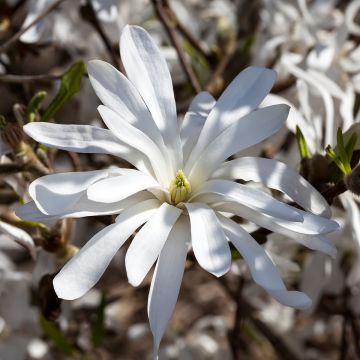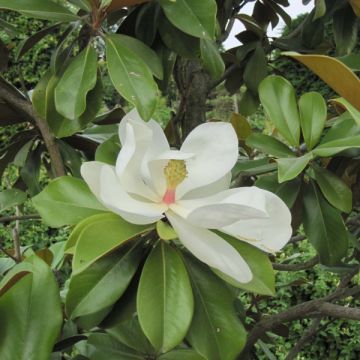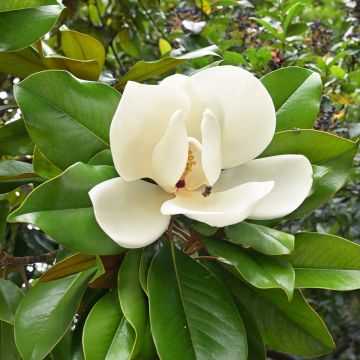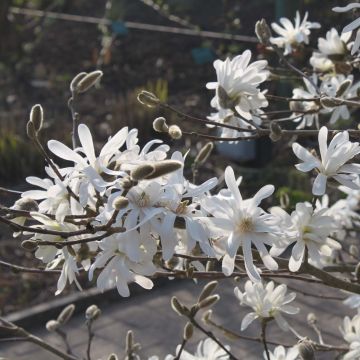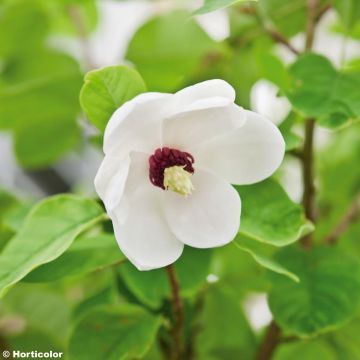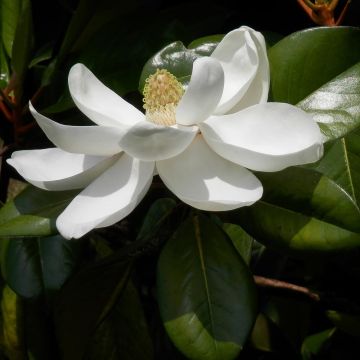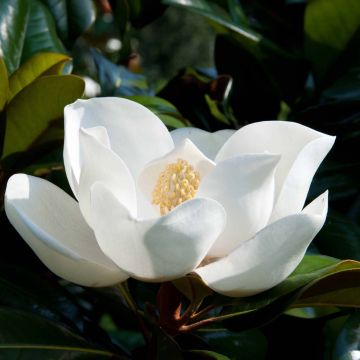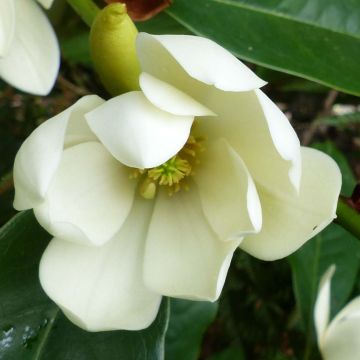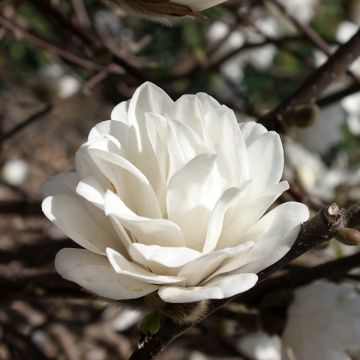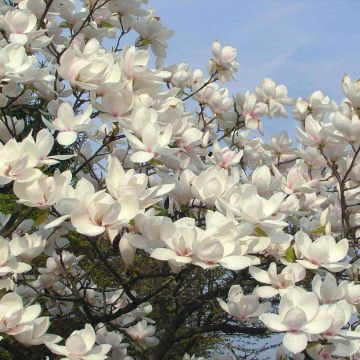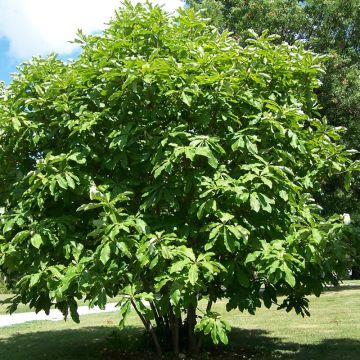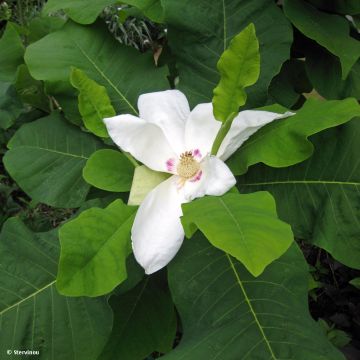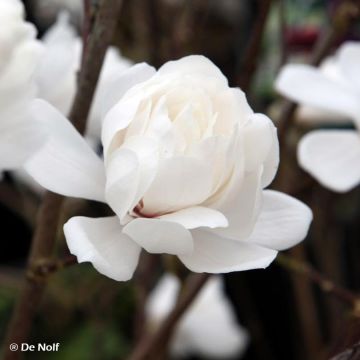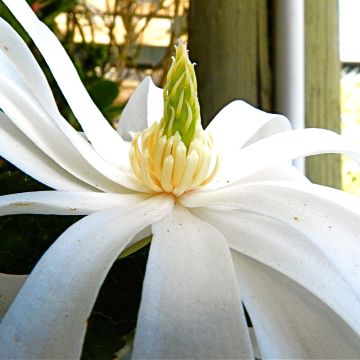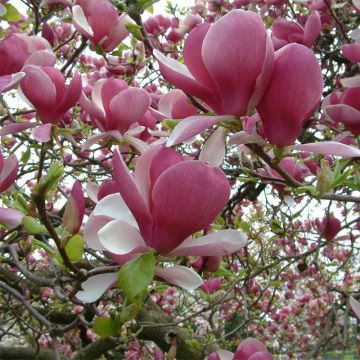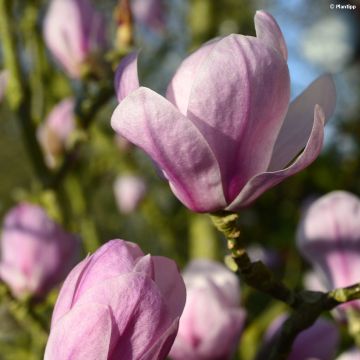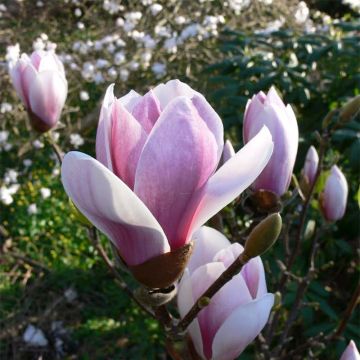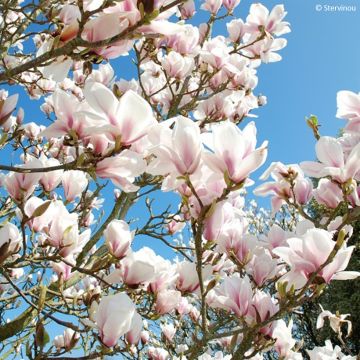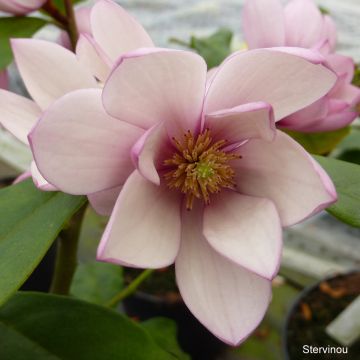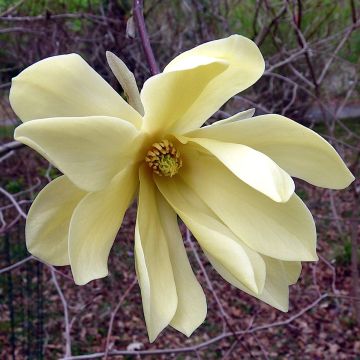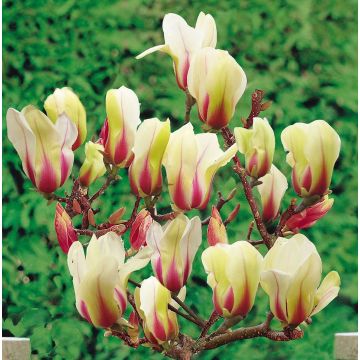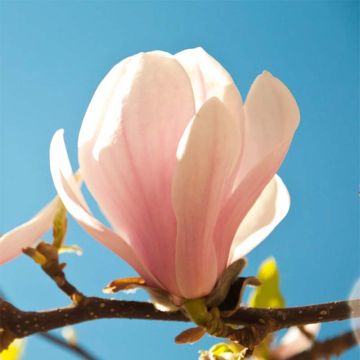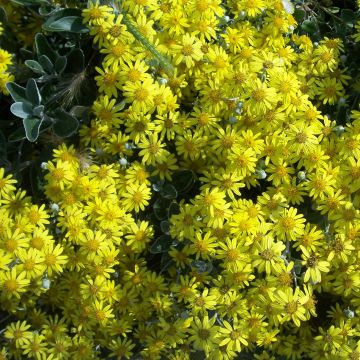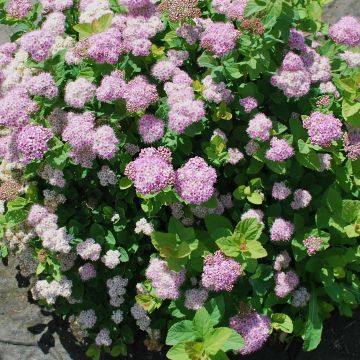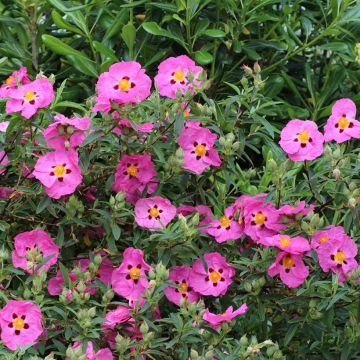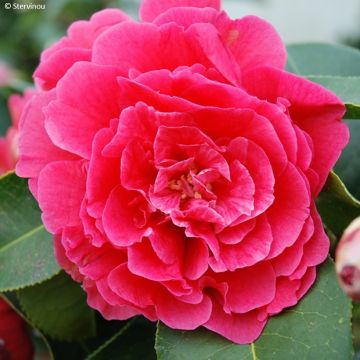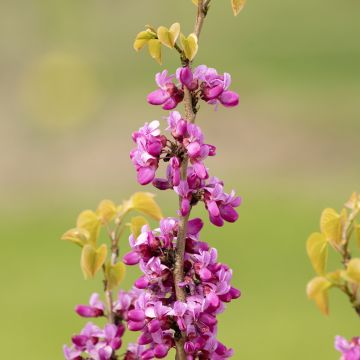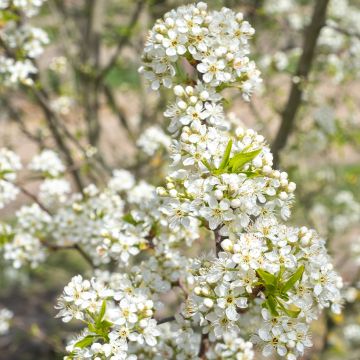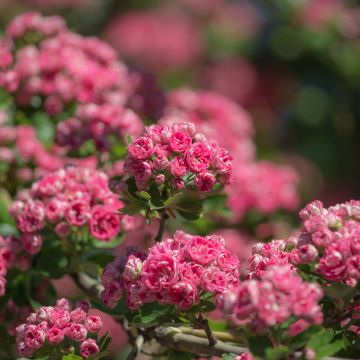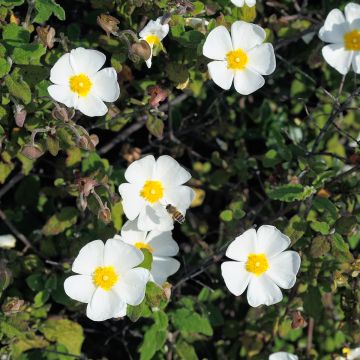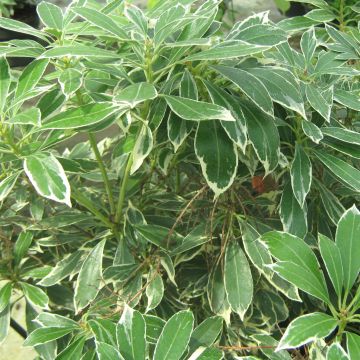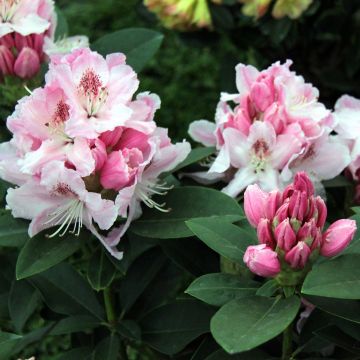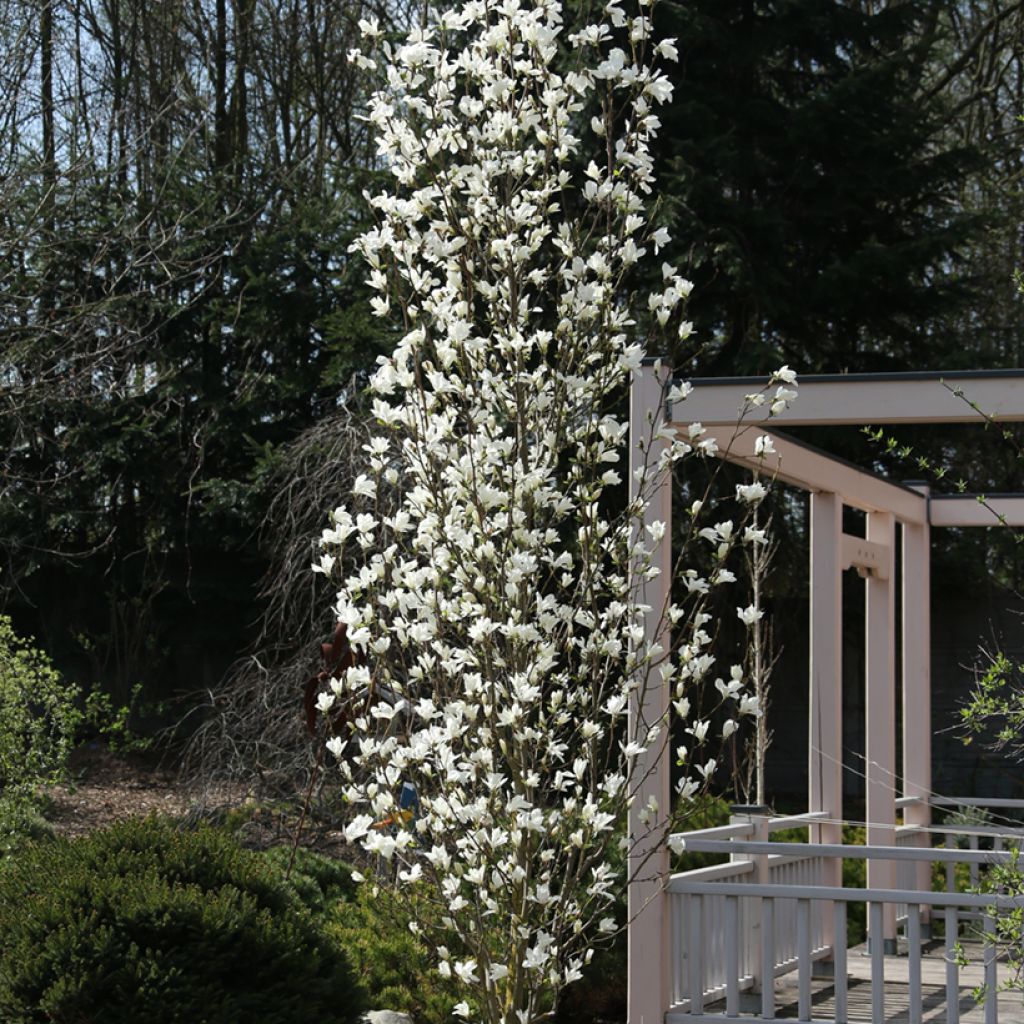

Magnolia kobus Isis MARACZI™ - Kobus magnolia
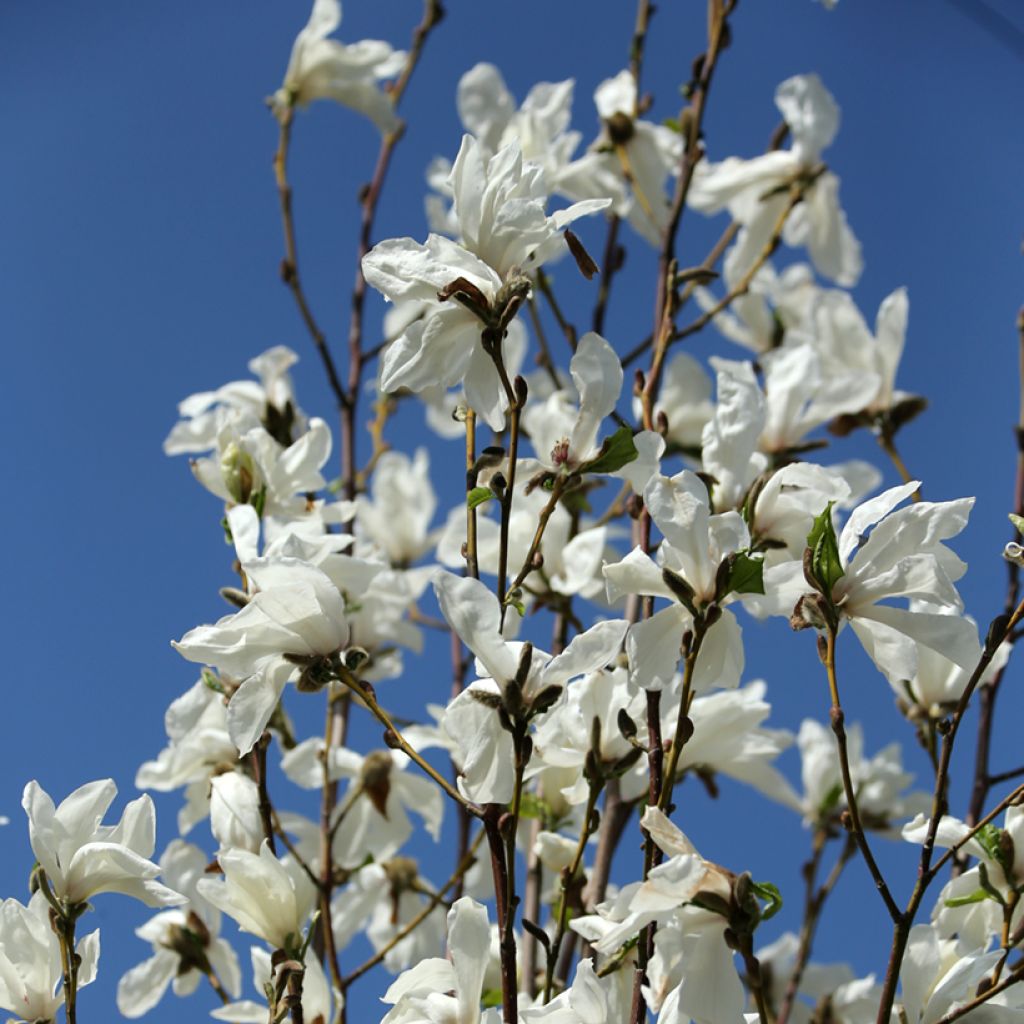

Magnolia kobus Isis MARACZI™ - Kobus magnolia
Magnolia kobus Isis MARACZI™ - Kobus magnolia
Magnolia kobus 'Isis' MARACZI™
Kobus magnolia, Northern Japanese magnolia
Why not try an alternative variety in stock?
View all →This plant carries a 24 months recovery warranty
More information
We guarantee the quality of our plants for a full growing cycle, and will replace at our expense any plant that fails to recover under normal climatic and planting conditions.
From €5.90 for pickup delivery and €6.90 for home delivery
Express home delivery from €8.90.
Delivery to Corse prohibited: UE law prohibits the import of this plant from mainland France to Corse as part of the fight against Xylella fastidiosa. Please accept our sincere apologies.
More information
Does this plant fit my garden?
Set up your Plantfit profile →
Description
The Magnolia kobus Isis, known by its cultivar name 'Maráczy', is a Kobe Magnolia, a species of magnolia that tolerates limestone. Isis is characterised by a columnar habit with a semi-open crown, ideal when space is limited, and yellow-green branches, lighter than those of the species. It forms a large, fast-growing bush that bears a multitude of white star-shaped flowers from the end of winter.
The Magnolia kobus belongs to the magnolia family. It is native to Japan and can reach a height of 10m with a pyramidal and ramified habit. The 8 to 10cm diameter corollas are solitary, white, sometimes slightly pink, and bloom on naked wood in March. The stamens are yellow. Afterwards, the bush develops deciduous, alternate, narrow, ovate, often plicate leaves, medium green with a paler underside, slightly aromatic, 15 to 18cm long. Isis 'Maráczy' is a valuable selection, originating from a spontaneous seedling of Magnolia kobus, selected by Prenor nurseries in Hungary. It reaches up to 7m in height at maturity, with a spread of 1.5 to 2m, with a columnar habit and a regular to elongated ovoid crown, with a continuous main branch. While the young branches are yellow-green and lighter than those of M. kobus, the mature bark is identical to that of the species. The young shoots are bronze in colour, becoming darker green in summer. The trees bear flowers from a young age.
The Kobe Magnolia Isis appreciates a fresh, rich, well-drained soil, even limestone, in a sunny or partially shaded position, sheltered from prevailing winds. In summer, it is preferable to maintain soil moisture by applying mulch around the base. The Magnolia kobus Isis looks beautiful as a standalone plant in a small garden, but its columnar shape also allows it to be used at the back of a border surrounded by early-flowering bulbs and various heights of perennials, ensuring a spread of flowering. It can also be associated with twisted dwarf pines, an Acer palmatum, and a few Japanese Azaleas.
Report an error about the product description
Plant habit
Flowering
Foliage
Botanical data
Magnolia
kobus
'Isis' MARACZI™
Magnoliaceae
Kobus magnolia, Northern Japanese magnolia
West Asia
Other Magnolia
Planting and care
The Magnolia kobus Isis should be planted in the spring in rich, moist, or even wet soil in the summer, well-drained in a good forest soil (pH 6), even though it can tolerate limestone. It appreciates a light sun exposure or partial shade, sheltered from prevailing winds. Be careful not to break the fleshy roots and not to bury the root ball too deeply. Mulch and water in the summer. The year following planting, spread slug repellent at the base, as spring attacks are dangerous for young plants. Beware of heavy frost and hot, dry summers. Maintain good humidity by showering its foliage with a fine spray only in the evening. Pruning is unnecessary.
Planting period
Intended location
Care
This item has not been reviewed yet - be the first to leave a review about it.
Spring-flowering shrubs
Haven't found what you were looking for?
Hardiness is the lowest winter temperature a plant can endure without suffering serious damage or even dying. However, hardiness is affected by location (a sheltered area, such as a patio), protection (winter cover) and soil type (hardiness is improved by well-drained soil).

Photo Sharing Terms & Conditions
In order to encourage gardeners to interact and share their experiences, Promesse de fleurs offers various media enabling content to be uploaded onto its Site - in particular via the ‘Photo sharing’ module.
The User agrees to refrain from:
- Posting any content that is illegal, prejudicial, insulting, racist, inciteful to hatred, revisionist, contrary to public decency, that infringes on privacy or on the privacy rights of third parties, in particular the publicity rights of persons and goods, intellectual property rights, or the right to privacy.
- Submitting content on behalf of a third party;
- Impersonate the identity of a third party and/or publish any personal information about a third party;
In general, the User undertakes to refrain from any unethical behaviour.
All Content (in particular text, comments, files, images, photos, videos, creative works, etc.), which may be subject to property or intellectual property rights, image or other private rights, shall remain the property of the User, subject to the limited rights granted by the terms of the licence granted by Promesse de fleurs as stated below. Users are at liberty to publish or not to publish such Content on the Site, notably via the ‘Photo Sharing’ facility, and accept that this Content shall be made public and freely accessible, notably on the Internet.
Users further acknowledge, undertake to have ,and guarantee that they hold all necessary rights and permissions to publish such material on the Site, in particular with regard to the legislation in force pertaining to any privacy, property, intellectual property, image, or contractual rights, or rights of any other nature. By publishing such Content on the Site, Users acknowledge accepting full liability as publishers of the Content within the meaning of the law, and grant Promesse de fleurs, free of charge, an inclusive, worldwide licence for the said Content for the entire duration of its publication, including all reproduction, representation, up/downloading, displaying, performing, transmission, and storage rights.
Users also grant permission for their name to be linked to the Content and accept that this link may not always be made available.
By engaging in posting material, Users consent to their Content becoming automatically accessible on the Internet, in particular on other sites and/or blogs and/or web pages of the Promesse de fleurs site, including in particular social pages and the Promesse de fleurs catalogue.
Users may secure the removal of entrusted content free of charge by issuing a simple request via our contact form.
The flowering period indicated on our website applies to countries and regions located in USDA zone 8 (France, the United Kingdom, Ireland, the Netherlands, etc.)
It will vary according to where you live:
- In zones 9 to 10 (Italy, Spain, Greece, etc.), flowering will occur about 2 to 4 weeks earlier.
- In zones 6 to 7 (Germany, Poland, Slovenia, and lower mountainous regions), flowering will be delayed by 2 to 3 weeks.
- In zone 5 (Central Europe, Scandinavia), blooming will be delayed by 3 to 5 weeks.
In temperate climates, pruning of spring-flowering shrubs (forsythia, spireas, etc.) should be done just after flowering.
Pruning of summer-flowering shrubs (Indian Lilac, Perovskia, etc.) can be done in winter or spring.
In cold regions as well as with frost-sensitive plants, avoid pruning too early when severe frosts may still occur.
The planting period indicated on our website applies to countries and regions located in USDA zone 8 (France, United Kingdom, Ireland, Netherlands).
It will vary according to where you live:
- In Mediterranean zones (Marseille, Madrid, Milan, etc.), autumn and winter are the best planting periods.
- In continental zones (Strasbourg, Munich, Vienna, etc.), delay planting by 2 to 3 weeks in spring and bring it forward by 2 to 4 weeks in autumn.
- In mountainous regions (the Alps, Pyrenees, Carpathians, etc.), it is best to plant in late spring (May-June) or late summer (August-September).
The harvesting period indicated on our website applies to countries and regions in USDA zone 8 (France, England, Ireland, the Netherlands).
In colder areas (Scandinavia, Poland, Austria...) fruit and vegetable harvests are likely to be delayed by 3-4 weeks.
In warmer areas (Italy, Spain, Greece, etc.), harvesting will probably take place earlier, depending on weather conditions.
The sowing periods indicated on our website apply to countries and regions within USDA Zone 8 (France, UK, Ireland, Netherlands).
In colder areas (Scandinavia, Poland, Austria...), delay any outdoor sowing by 3-4 weeks, or sow under glass.
In warmer climes (Italy, Spain, Greece, etc.), bring outdoor sowing forward by a few weeks.

































